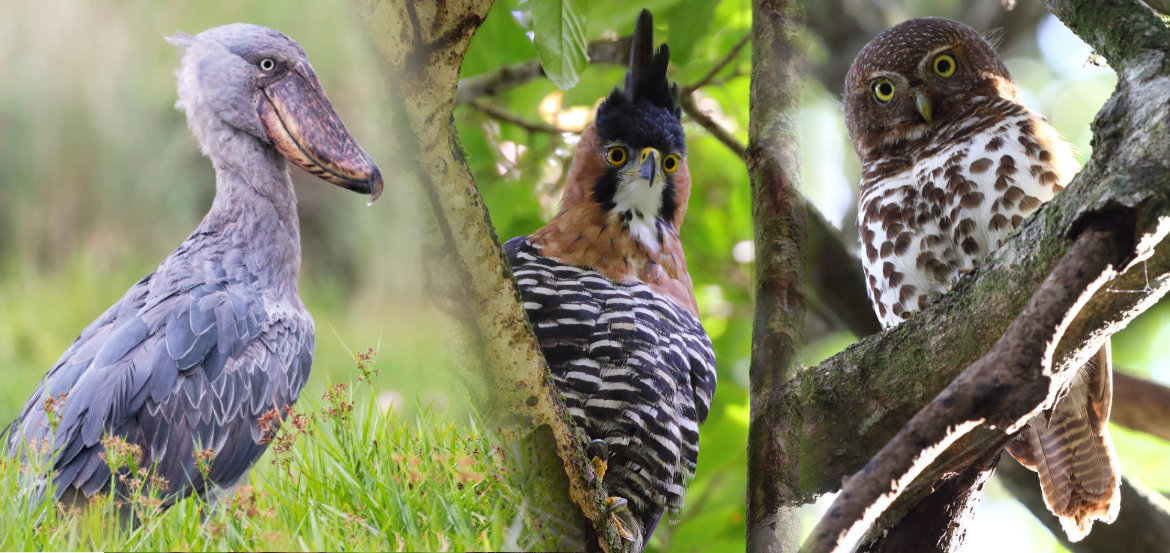
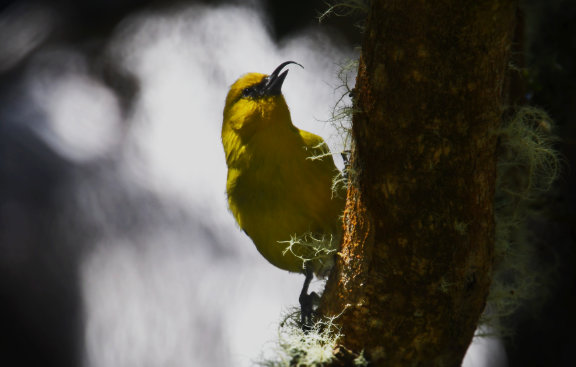
Akiapola’au by Forrest Rowland
This year travel began again! Though slow, daunting, halted at points, and cumbersome for a variety of reasons, I was lucky enough to get vaccinated early and visit South Africa, Colombia, and host a few tours in my home region of Montana, USA. I had almost forgotten how much I enjoyed sharing experiences and birds with our wonderful clients. Of the 1,800+ species I came across in the three countries I was able to spend time in, my first-ever birding tour in Hawaii this September/October was absolutely incredible, and provided me several lifers. More importantly, I was able to enjoy time in the last remaining native habitats on the islands, home to many of the world’s rarest birds. Given the ongoing loss of habitat, increasing frequency of both avian malaria and avian pox, and increasing temperature facilitating the spread of both of those diseases, the native birds of Hawaii are perhaps the most imperiled on Earth. I was thrilled for the opportunity to see nearly all of the remnant native species on the island chain.
The most impressive of these many endangered species was the Akiapola’au. This incredible bird numbers less than 200 pairs, confined to the little remaining high elevation humid forest on the big island of Hawai’i. Though not the brightest of the Hawaiian Honeycreeper group, the Aki is undoubtedly the most unique. Filling the niche of woodpeckers and nuthatches, this special bird is the only species with a swiss army tool for a bill. Unlikely as it seems, the upper and lower mandibles of the Akiapola’au’s bill are each designed for a different purpose! The thick, sharp, wedge-tipped lower mandible is used for hammering into the bark, worrying holes in the branches, and prying access to their prized food source beneath. The upper mandible is long, decurved, and much thinner. It is used to probe into the access created by the lower mandible to extract larvae and other foods. Truly, an incredible bird, that I felt utterly privileged to enjoy time with.
Gouldian Finch by Erik Forsyth
When a “bubble” between Australia and New Zealand was announced I was quickly arranging a week’s leave in June, 2021. My plan was to visit the Northern Territory for 7 days heading into the interior south of Darwin.
A worrying aspect leading up to my trip was an increase in covid-19 cases in Sydney. My route was Auckland/ Sydney/ Darwin. No sooner had I left Sydney en route to Darwin and New South Wales locked the state down due to many cases emerging!.
I arrived in Darwin at 2:00am and slept on a bench outside the terminal where I fell asleep to the strange and eerie sounds of Bush Thick-knee’s calling all around me.
The following morning before dawn, I drove to the Edith falls road where several small pans still held water. The birdlife was booming as many birds were coming in to drink as the temperature was rising. I quickly found 3 lifebirds in the forms of Bar-breasted Honeyeater and both Long-tailed and Masked finches.
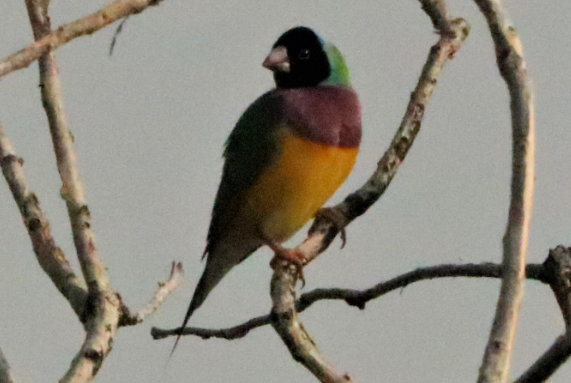
My main target, which was the reason for coming to this spot was not seen and by 09:00am I was getting a tad worried, occupying myself with photos of Rainbow Bee-eaters and Diamond Doves, then suddenly, I heard a high -pitched call I wasn’t familiar with and soon I located a small group of the beautiful Gouldian finches, the adults in stunning colours…………what a bird! and well worth waiting several years to see. My Bird of 2021.
I also managed a trip to Kakadu NP where i picked up a further 3 lifers in the form of Partridge Pigeon, the stunning Banded Fruit Dove and White-lined Honeyeater.
My flight home was re-routed back through Brisbane in Queensland and 5hrs after departing they closed the borders with New Zealand! I made by the skin of my teeth so to say!
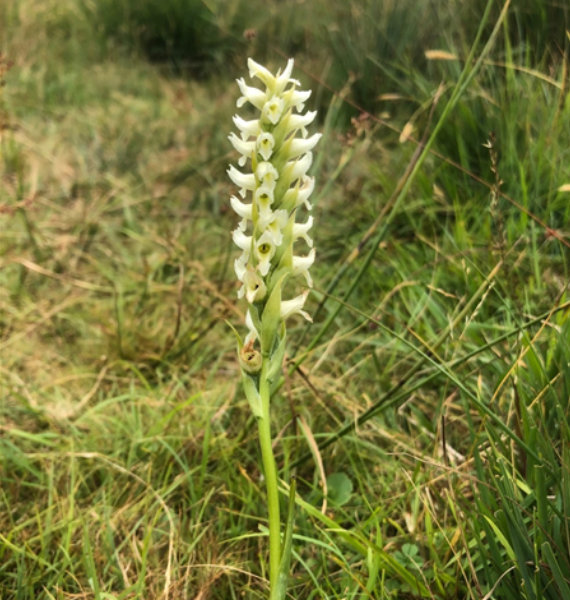
Irish Ladies Tresses – Nigel Redman
My best bird of 2021 was not a bird at all, but an orchid! 2021 was another strange year, and I only left my home county of Norfolk twice in the whole year. Spring and summer were fairly decent for birds, but autumn was deeply disappointing, with an almost total lack of easterly winds. It must have been one of the quietest Octobers on record in Norfolk. One of the most notable sightings for me in the spring was an Alpine Swift, a species that occurs annually but in small numbers – maybe 12–15 sightings per year on average in the whole of Britain. It was probably the most frequently occurring rarity that I had never seen in Britain, and so I was delighted to connect with one at Cromer in June, during its brief stay of just four hours!
But the year’s highlight was Irish Ladies Tresses, a rare species of orchid that occurs in Britain at only a few sites in western Scotland and one site in mid Wales, the latter only discovered in 2019. There are some 50 species of native wild orchid in Britain, and many of them are rare or scarce. A few are so rare that their locations are shrouded in secrecy, and one species – the mythical Ghost Orchid – has only been seen once in Britain in the past 35 years. I have long had an interest in orchids, and over the years I have managed to see every British species – except Irish Ladies Tresses. (I have even seen Ghost Orchid before it vanished from its only regular site in the 1980s.) So, with much enthusiasm, a few friends and I mounted an expedition to Borth Bog, near the Dyfi estuary, at the end of July. I had arranged to meet the warden there, although as it turned out, we found the small white spikes rather easily, most of them within an electric fence to keep out grazing horses. We counted 21 magnificent flowering spikes in all, although the colony now numbers about 30 plants. It was a fitting species to see as my last British orchid, and therefore it was the highlight of my year (so far!).
Ivory Gull – Stephan Lorenz
Sitting on the north-western tip of St. Lawrence Island, the small Yupik village of Gambell is one of the remotest and finest birding locations in all of Alaska. This spring was cold in the Bering Sea and vast stretches of pack ice clung to the rugged shore of the island. The freezing temperatures and extensive sea ice delayed spring migration by a few days but did offer one of the Arctic’s true avian gems. As we headed out to the morning sea-watch during our third day of the tour, I saw an ethereally white bird coursing elegantly through the blustery winds: it could only be one thing, the much-wanted Ivory Gull. Before even setting my binoculars on the bird, I ran back along the line of ATV’s that our group was arriving on and got everyone’s attention. Luckily, we didn’t have to worry as the bird was eventually joined by a second and then settled onto the gravel beach for an hour where we could take many close photos and enjoy great views of this magical species. In all, we saw four Ivory Gulls during the tour, including two immaculate adults. The memories of freezing north winds, shifting sea ice, and this arctic gull will stay with us forever.
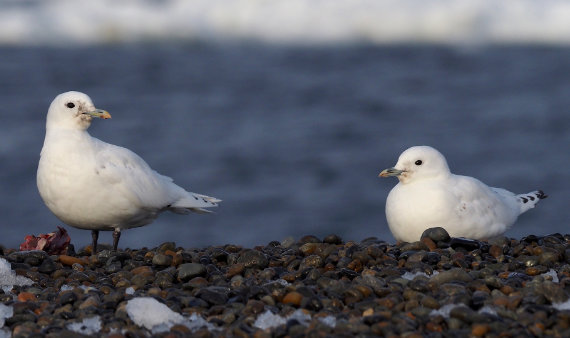
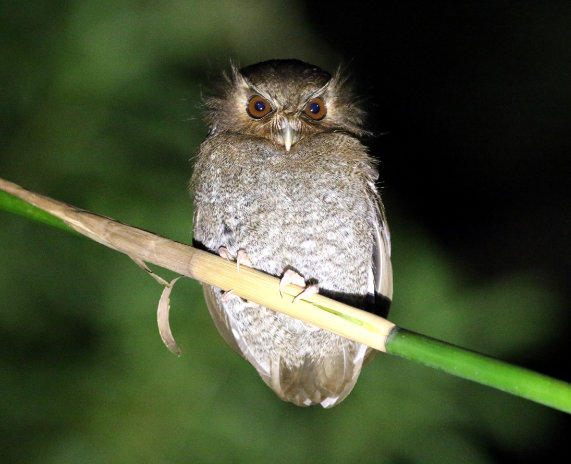
Long-whiskered Owlet – Adam Walleyn
Easy choice for me this year! My only international trip this year was our incredible Northern Peru circuit and Long-whiskered Owlet is always right there at the top of the most wanted birds on this trip, and indeed the world.
After getting completely rained out on the first night we set out down the dramatic canyon it inhabits under gloomy skies and rolling thunder. Rain seemed sure to force a retreat but as darkness set in it remained dry. Only problem was no owls were calling. Eventually we did have actually three birds calling but not particularly close. After changing position a couple times and waiting for at least an hour, rain somehow holding off the whole time, there was suddenly a purring sound coming from right beside us. The light when on and it actually took us several seconds to all spot the bird in the light because it was SO close – sitting on a bamboo stalk that curved over the trail. We savored the views for a few minutes and then walked away with the bird still sitting there. Wow!
Definitely my best experience with this bird and always a really special bird to see for me personally. I always think back to my first time in northern Peru where there were no known sites for the bird, its call was unknown, there wasn’t even a field guide to Peru for the bird to be pictured in, and it was even thought at that time to be flightless. Just a really special bird and an encounter like this was wonderful!
Pel’s Fishing Owl – Daniel Danckwerts
Choosing a bird of the year is always something of a challenge, particularly when lockdown restrictions have limited the amount of international travel, I have been able to do. Thus, I’ve had to stay content with those oh so familiar birds closer to home; and what a joy it has been to appreciate them for a change. However, there is one sighting from last year that sticks out in my mind. The Pel’s Fishing Owl is widely regarded as one of Africa’s ‘great’ birds and is highly sought-after throughout its range. Many search for years before eventually sighting the large orange shape, perched high in a dark tree. I’ve been incredibly fortunate with the species, having seen around 30 individuals during my lifetime – largely thanks to my upbringing in southern Zambia, where the species occurs along all major river systems. I even managed to locate a pair within Mkhuze Game Reserve in South Africa, where the species is rare and only infrequently sighted. All of these sightings have been of single birds, sometimes a pair, at a day roost; and I’m sure the same can be said for most people’s views of a ‘Pel’s’.
In September, I traveled to Pafuri – the northernmost section of Kruger National Park, here in South Africa – to search for the Pel’s Fishing Owl on a Tailor-Made tour with Rockjumper. It was a mammoth effort amounting to two full days walking through appropriate roosting areas, and several hours each night scouring the Luvuvhu River. All without success. However, at dinner on the eve of our last day, a pair of Pel’s Fishing Owls started calling a short way upstream from our lodge. Running to the end of the boardwalk and scanning every exposed snag and fallen log jutting into the river…nothing! But, whilst walking back towards the restaurant, a sudden instinct told me to shine a torch into the tree hanging above. Some distance away from the river, it seemed unlikely that the Pel’s would be perched here. But there, in all its glory, sat a gorgeous Pel’s Fishing Owl. Seeing this species after nightfall was something I shall think back to for quite some time. The pair of Pel’s called throughout the night, serenading us into a joyous sleep.
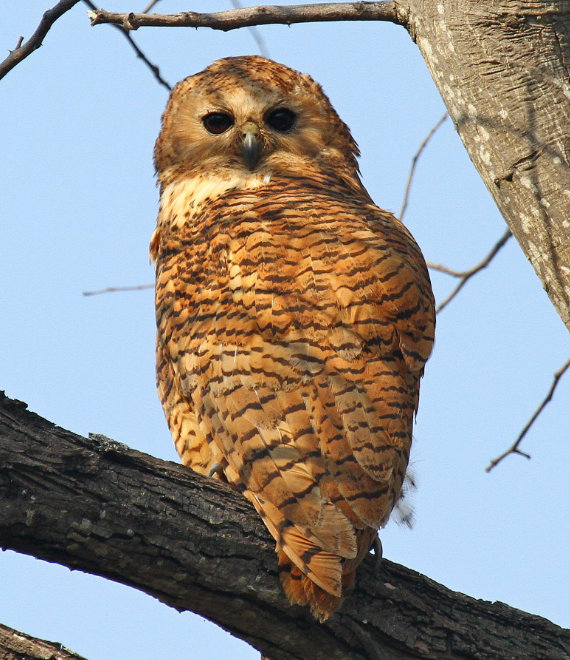
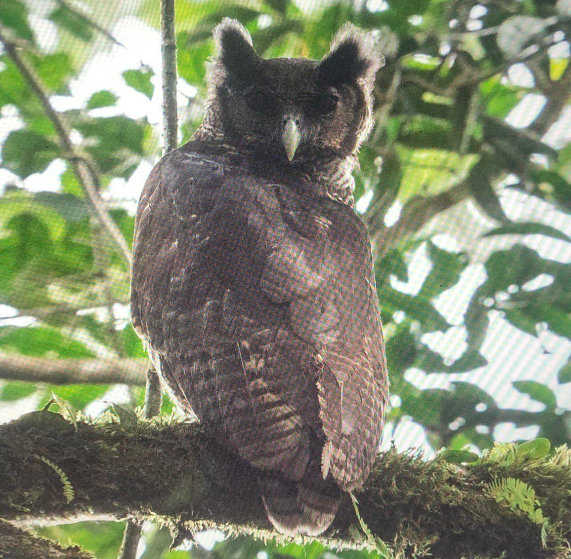
Shelley’s Eagle-Owl – Rob Williams
On the 17th of October, Joe Tobias and I headed up the Atewa ridge in central Ghana. In a country that is predominantly flat or low rolling hills, this range of hills ascending to 773m are one of the few areas where the lowland forest becomes somewhat montane, with a noticeable increase in epiphytes on the trees as the area is frequently shrouded in cloud. For a visiting birder, this is a must-visit site for specialities including Nimba Flycatcher, and that ensured it was on our 6-day sprint itinerary to a few key sites between extended sessions of fieldwork on a research project.
We hurried up the first few hundred meters in darkness to get to about 600 m by dawn and then progressed more slowly as the forest revealed its treasures. A Forest Robin of the subspecies inexpectatus hopped on the track in front of us, several Nimba Flycatchers were found and we enjoyed their characteristic behavior of running along the moss-covered branches. A Forest Scrub Robin, one of the most secretive species, gave us a fantastic performance appearing to be theatrically lit when it appeared in a small spot of sunlight penetrating the dense understory. A male Many-coloured Bush-Shrike of the scarlet-throated form appeared lit from within as it clambered through a vine-tangle. It was proving to be a great day and we had seen all our main targets when we paused for some lunch, which was duly interrupted by a family of Chestnut-capped Flycatchers, resembling a new world furnarid as the sun lit their rufous tails, and a pair of Red-fronted Antpeckers nest-building. We discussed whether we should head back or carry on a bit further; the sky was beginning to darken to the north and rain seemed likely. Fortunately, we decided to look around the next corner.
A large raptor flashed across the trail some 50 m ahead of us, we had recently heard a Crowned Eagle call and we assumed it might be this. Rob had seen it less well and hurried forward, spurred on by mobbing calls of Shining Drongos. Locating it on a branch, it was clearly huge and appeared to have a single large crest at the back of the head as it was looking sideways. He called Joe’s attention to it, causing it to turn and reveal that the crest was two ear-tufts and what was now staring at us was clearly a huge dark-faced and dark-eyed owl. Cameras were rapidly raised and a few shots fired off with fingers struggling to dial in 2 stops of compensation for the backlit white clouds. Then it dropped from its perch and was gone. In disbelief we thumbed through the book, trying to convince ourselves that we were wrong in our initial suspicions that we had just stumbled upon an incredibly rare owl. But, the dark eyes, pale bill, overall darkness of the bird, heavily barred breast feather viewable in the photos, and huge size, kept leading us back to what seemed unthinkable. Had we just seen Shelley’s Eagle-Owl? – a species people assumed might be in the lowlands of the Ankasa reserve, our next destination on our research project. Walking back down the hill, we got very wet, but smiles were glued to our still disbelieving faces and occasional profanities were uttered under our umbrellas.
On arrival at the hotel, Rob sent the picture to colleagues via the Rockjumper Guides group and a few select friends asking for comments. Many of the responses are not suitable for this blog but some of the phrases used were: “mega”, “holy-grail”, “struck gold”, “can I have the GPS point?”. Some of the best birders in Africa all agreed with the identification. In the next 48 hours we saw both Fraser’s and Akun Eagle-Owls which proved a nice and reassuring comparison.
Our ebird list (eBird Checklist S96242269) for the day records 97 species and a walk of just under 16km (though this does not include the 4 km we covered predawn). It would have been a great day’s birding anyway, but our targets of Nimba Flycatcher etc., although spectacular and greatly enjoyed, pale into insignificance in comparison with the image of that stern and furious looking owl that is burned into our memories. Birding does not get any better.
Solitary Eagle – Lev Frid
For me, like most birding guides, it was a rather “different” year. Luckily, I was able to get a job doing some consulting and was busy with that for most of the warm season here in Ontario. Once autumn came along, I took the opportunity of some free time to go to Colombia, to see some friends I have not seen since the start of the pandemic, and my first international venture since then! We had a great trip and for the first time in a long time, it felt like things were starting to go back to normal. While birding up in Santa Marta, we lucked out and got to watch a magnificent pair of Solitary Eagles for over half an hour, as they soared above and even below us in the valley. Undoubtedly, these were my birds of the year, a long-awaited lifer, and hopefully a sign of things to come!
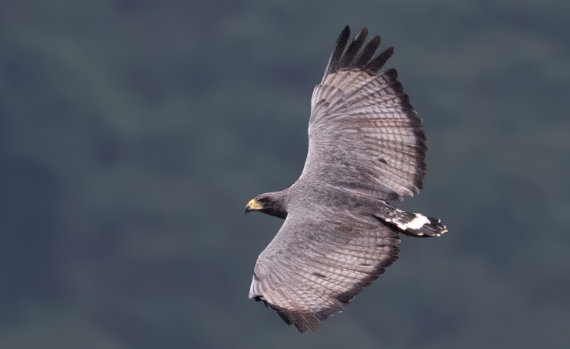
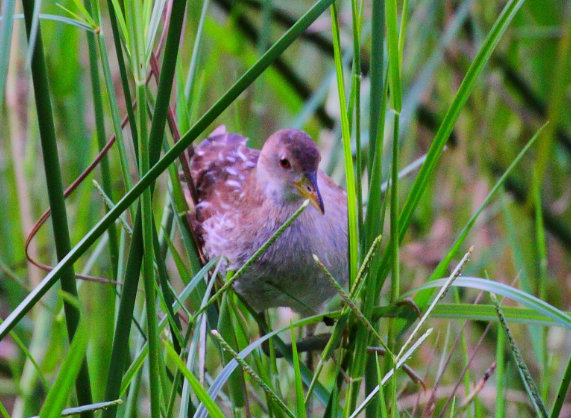
Striped Crake – Glen Valentine
For over two decades the Striped Crake has been my nemesis bird! Growing up and birding around Southern Africa where this rare, erratic and extremely elusive crake regularly occurs but in very small numbers, extremely locally and only in very wet summers, it’s been a species I’ve searched for all my life but with no success until March 2021. Having had a wetter summer than usual, much of South Africa’s seasonal wetlands were inundated and teeming with irruptive wet-season migrants that included several “twitchable” Striped Crakes.
My first attempt at chasing my nemesis bird in February 2021 saw me driving eight hours from Pietermaritzburg to the north of Pretoria where the floodplains of the Pienaar’s River was producing regular sightings of the species, including a pair with chicks. However, by the time I’d managed to arrange things on my side and go for the chase, the floodplain had dried up virtually overnight due to the sudden extremely hot and dry weather the area had experienced in the days leading up to my trip. Alas, having spent four nights camping and scouring the area, I only managed to encounter a few Baillon’s Crakes and a couple of other nice species but no Striped Crake!
However, the next month I’d been guiding a local birding outing to Thurlow Game Reserve with my good friend and long-standing Rockjumper guide, David Hoddinott, when we received a report of a male Striped Crake with tiny black chicks at a hide/blind in the famous Mkhuze Game Reserve. Immediately, I made up my mind that I was going for it so after finishing the outing, I raced back home, threw a few items in a bag, and hit the road for the four-hour drive northwards. Picking up my good mate and fellow Rockjumper guide, Andre Bernon along the way, we arrived at the hide in the late afternoon, the perfect time for the crake to reappear. Several minutes passed and that dipping feeling began to rear its ugly head but then suddenly, Andre picked up a slight bit of movement in the flooded grass just meters away, and there in all its glory was a male Striped Crake, swimming moorhen-like through the grass tussocks. We watched it intermittently for several minutes before witnessing some really bizarre behavior as it began climbing up the taller sedges, picking off grasshoppers and spiders as it did so. It then proceeded to build a bower-like structure just before dusk as if it were building a night-time nest for the chicks to settle in for the night, reminiscent of our great ape cousins, the Chimps, Orangutan, and Gorillas.
An amazing experience all-round and undoubtedly one of my all-time birding highlights!
Violet-eared Waxbill – Clayton Burne
For much of the year, international travel was either impossible or very difficult – so we focussed again on birding locally in South Africa. Meg and I have seen nearly every resident and regularly occurring migrant in the region, so aside from chasing rarities – we are left to enjoy the many species we have seen before. In late summer, we headed to Pilanesberg Game Reserve in the North West province. Almost entirely contained within the crater of an ancient, extinct volcano – the reserve is home to Iron and Stone age sites, an excellent selection of typical megafauna and over 350 species of bird. Nearly every animal on the reserve today is a result of what was the largest mammal relocation operation in 1979, when more than 6000 individuals were introduced to the reserve in Operation Genesis.
The reserve has no particularly unusual or critical bird species, which is why it is not covered by any Rockjumper Birding Tours. It does however have a wide selection of dry bushveld species, and numerous man made dams and lakes with their accompaniment of waterfowl. Of primary interest to me were a number of bushveld species for which I had poor, or no photos. Waxbills were high on this list, as many of the species I was looking for were resident on my farm in the days before I had a decent camera. Early morning drives racked up high numbers of species, and added to our photo collection – but it was one morning, and indeed one small bush that gave up every single species of Estrild I was after – in quick order we had Black-faced Waxbill, Jameson’s Firefinch, Green-winged Pytilia and finally a spectacular male Violet-eared Waxbill. A successful trip, and despite a little competition from a few rarities earlier in the year – Violet-eared Waxbill was my bird of the year.
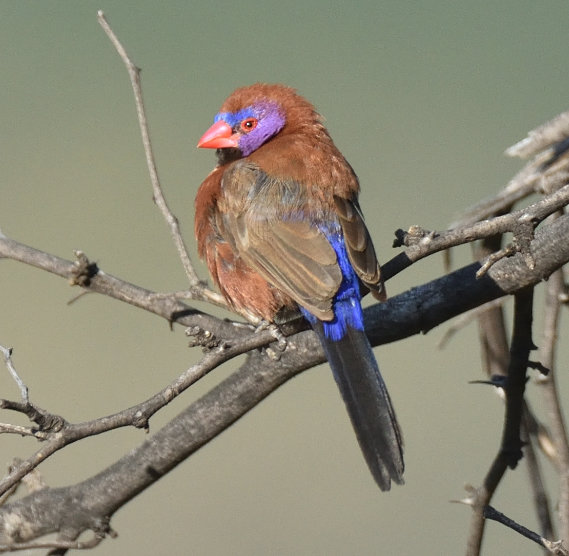
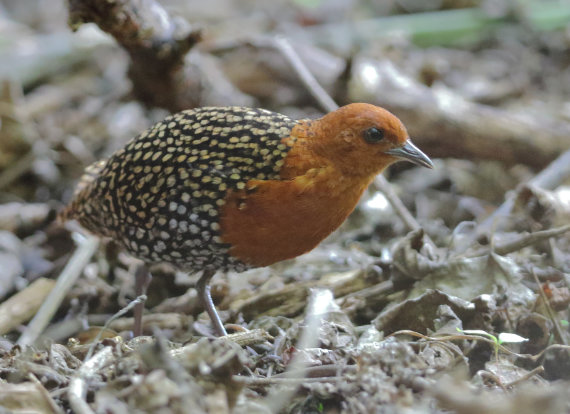
Buff-spotted Flufftail – David Hoddinott
I had the most amazing encounter with the cute and elusive Buff-spotted Flufftail. Flufftails are a shy and reclusive family and usually very difficult to observe. I was fortunate to have the most amazing views of a male at Darvill Bird Sanctuary, one of our local birding sites in Pietermaritzburg, South Africa. This obliging male came out of thick undergrowth to give fabulous views. He even stayed long enough for me to get a photo.
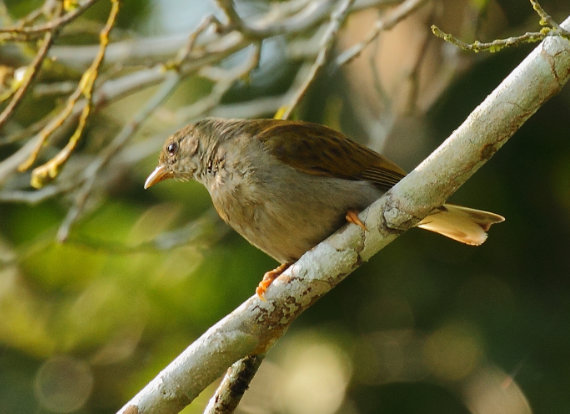
Yellow-footed Honeyguide – Andre Bernon
The Yellow-footed Honeyguide is arguably one of Africa’s most elusive and difficult honeyguides to track down. I am finally on tour again, this time in Ghana, and we had a superb sighting in the Kakum Forest. I have seen it before, way up 50m in the canopy, but nothing compares to the sighting we just had, up close and personal yellow feet and all!
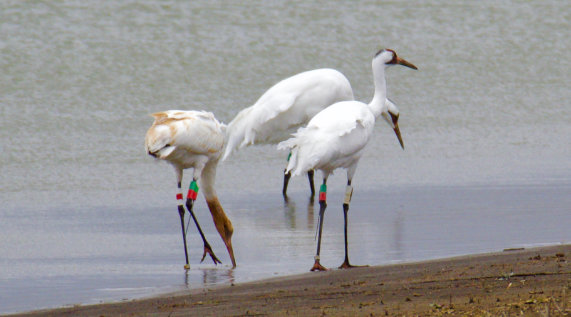
Whooping Crane – Bobby Wilcox
My best bird sighting of 2021 was an incredibly unique bird in an incredibly unique location. While spending part of the winter with friends in central Missouri, a short drive east to the mighty Mississippi River yielded a family of Whooping Cranes, a lifer, one of the rarest birds in North America, and a major conservation success story. With only about 20 birds remaining in the wild in the mid 20th century, many years of concerted conservation efforts have bolstered the population to nearly 500 today, And to add another interesting twist, the agricultural fields they were foraging in happened to be in a place called Kaskaskia Island, which is the only piece of land belonging to the state of Illinois that occurs west of the Mississippi River, after massive floods in the 1880s shifted the river’s main channel eastward.
Shoebill by Greg de Klerk
Up until November I had not had a tour since March 2020 and was restricted to birding in South Africa, leaving Black-eared Sparrow-Lark as my initial choice for bird of the year, but that changed suddenly with a spur of the moment trip to Uganda. Visiting Kibale Forest and the Rift Valley lakes offered us an opportunity to find some great competitors for my bird of the year, including Green-breasted Pitta and White-spotted Flufftail, but in the end, the choice was simple.
On our final day in Entebbe, we sailed across Lake Victoria to the famous Mabamba Swamps to begin our search for the prize species of the trip, the monotypic Shoebill. As we traversed the Papyrus beds and floating vegetation in our boat, a large stork-like shape came into view. Standing tall above the raft of floating vegetation, barely moving except to occasionally look in a new direction, stood the statuesque Shoebill. In a flurry of movement this amazing species extended his neck and with a small flight struck at a target below the surface, missing narrowly. We sat with this individual for about 30 minutes just enjoying being in the company of this incredible species, finally leaving this icon of African birding to his own devices. Without a shadow of a doubt, my Bird of the year.
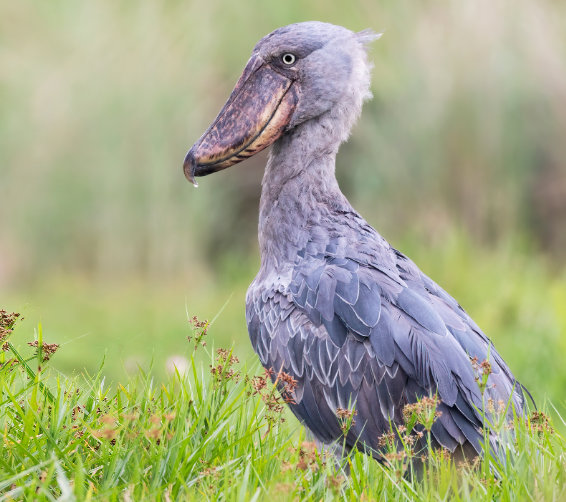
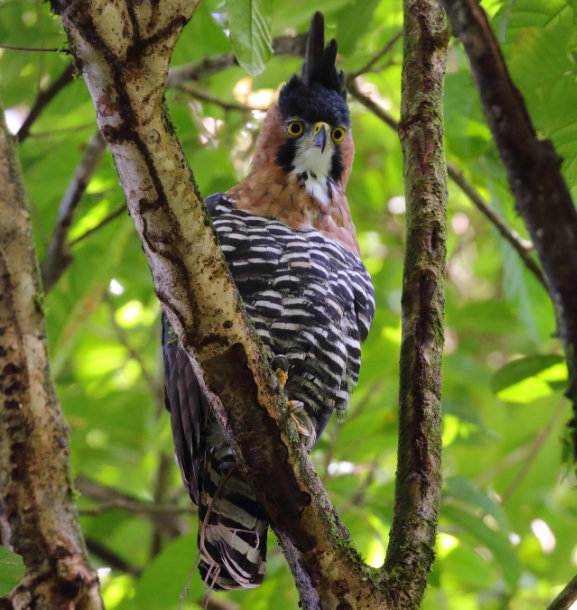
Ornate Hawk-Eagle – Keith Valentine
One of the most striking raptors in all the Americas the Ornate Hawk-Eagle, as its name suggests, is a gorgeous bird. Before my very first foray into South America, I got stuck into some focused studying up, as one tends to do, and I recall quite vividly opening to the raptor section of the book. The trip in question was to Brazil and one of the first birds to knock me out on the page was the Ornate Hawk-Eagle. I immediately fell in love with the idea that I might just see one and so on my trip it was always a species in the back of my mind. Unfortunately, no Ornate Hawk-Eagles made an appearance on that trip but that just added to the other thousand or so good reasons to go back to the Americas! Fast track to 2021 and despite numerous return trips to parts of South and Central America, where Ornate Hawk-Eagles can be found, it was still a bird that had eluded me.
I was extremely fortunate to be able to go across to Costa Rica in September. A truly mind-blowing short tour of what is undoubtedly one of the birdiest places on the planet. We covered highlands and lowlands and hill forest and in just 8 days managed to rack up a phenomenal 385 species including a magnificent Ornate Hawk-Eagle at Arenal! We had only been in the forest for a brief time and were listening to a calling Black-headed Antthrush when suddenly a shape appeared out of nowhere and landed right above our heads. I knew it was going to fly off again the moment it registered our presence but amazingly it simply sat and watched, completely relaxed with us. We didn’t really need optics but slowly we lifted binoculars and enjoyed every detail of its plumage. Later, we got some fabulous photos as well which was simply icing on the cake! We ended up spending at least 10 minutes enjoying this uncommon raptor in all its glory. An extremely memorable sighting and one that I will personally cherish for a long time.
Cape Barred Owlet – Adam Riley
The nominate subspecies of African Barred Owlet is an extremely rare and poorly known bird. It has only been recorded from two remote locations, around Bathurst/Kariega and Mbotji, both in the Eastern Cape Province of South Africa. The latest research, in which Rockjumper leader Dr. Daniel Danckwerts is involved, indicates that this subspecies should almost certainly be upgraded to full species status. It is about a third larger than other African Barred Owlet subspecies, and other differences include its vocalizations, darker back, and extensive tail barring.
I have been birding in South Africa for over 30 years during which time I have seen all the country’s species (besides some vagrants) but had not come across this one. So, I decided to make an effort to find this elusive owlet. In September we took a family vacation to the former Transkei region of the Eastern Cape and first stayed a few nights at Mbotji, a small village on an estuary along a beautiful section of the rugged Wild Coast. To get to our cottage we drove through a large patch of moist evergreen forest which looked ideal for the owlet. My friend Hugo Partridge and I went out early the next morning finding lots of great birds such as Buff-spotted Flufftail, Yellow-streaked Greenbul, Knysna Woodpecker and Spotted Ground Thrush, and eventually, we heard this partially diurnal owlet calling from deep in the forest, down a dangerous slope. After several attempts at trying to reach this calling bird, we gave up. The next afternoon we tried another site and again had an owlet calling but failed to find it before dark. However, on our final morning we located a third territory and this time I was able to approach the calling owlet and eventually found it directly overhead, where it stayed and called for half an hour until we left the area. What a thrill! We then stayed further south at another lagoon called Manteku, and here we also located three pairs of Cape Barred Owlet (Glaucidium capense capense), not previously recorded from this location.
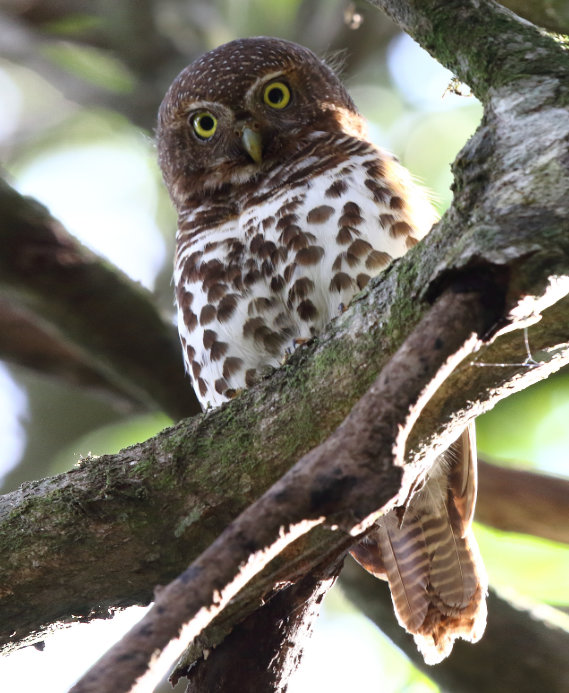
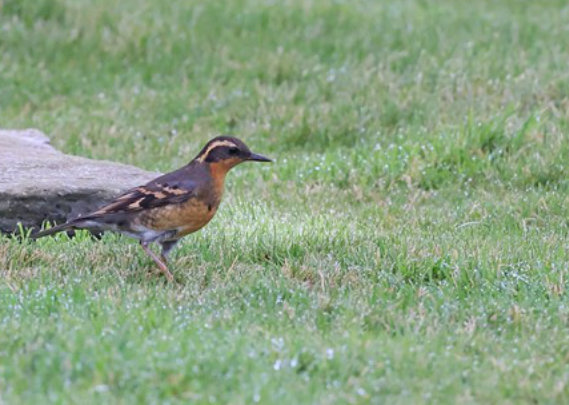
Varied Thrush – Stu Elsom
So, where better to start than at the beginning…
In the early 2000’s, my wife Jill & I were invited to do some winter ‘owling’ in Minnesota with our good friend Alex. The northern states were experiencing much higher numbers of owls than normal, and the invasion of hundreds of Great Grays was particularly incredible, and a spectacle we just had to bear witness to. Within a few days of the news, flights were hastily booked and we were on our way to Duluth. Over the course of the week we enjoyed some simply incredible birding with no less than 38 Great Gray Owls, 6 Northern Hawk Owls, 3 each of Barred and Great Horned Owls, 2 Snowy Owls, and both Boreal and Northern Saw-whet Owls, all in spectacular snowy scenery, with temperatures 40 below freezing!
At the end of our wonderful week birding, we prepared to head home, but Alex had one last surprise for us, one that had great resonance with me, a committed UK based twitcher of 20 years. You see, Alex was on the local birding grapevine and had received news of a scarce visitor to Minnesota, but a total MEGA in the UK with a single record in 1982; the mythical Varied Thrush!
Once he told us of his plan to call in and twitch the Varied Thrush on our way to back towards the airport I was full of excitement and anticipation, I mean who wouldn’t be, a totally unexpected life bird, one of the most spectacular members of the Zoothera thrushes on the planet – and we were going for it!
The following morning we arrived at the house in rural Minneapolis, it was surrounded by a large wooded garden which was decorated with an assortment of bird feeders. As we walked towards the house through deep crunching snow, numerous Juncos, Titmice and Nuthatches were zipping around, together with Northern Cardinal, American Tree Sparrow and even a couple of Hoary Redpolls – this was garden birding at a new level – it was like being in the proverbial sweetshop!
Settling down in comfy chairs with warm drinks and cookies, we eagerly awaited the arrival of the blue and orange dazzle of the Varied Thrush – the air of anticipation was palpable. Some 30 minutes later our local celebrity Zoothera had clearly not read the script and had still not appeared, to add to our nerves we were now perilously close to running out of time to get to the airport. The house-owner suggested that we put on our boots and walk around the edge of the property to see if we could locate the bird, which, we learnt had been present a good few days, and seen only 10 minutes before we arrived.
Setting off into the deep snow we got great looks at another Saw-whet Owl, roosting near some rubbish bins, and several noisy parties of Blue Jay, a handful of Pine Siskins and Hairy woodpecker, but no sign of any thrushes…As we walked around the corner of a tall stand of coniferous trees, the owner stopped abruptly, looked down, and then put his head in his hands, just like you see in a movie, but this was no movie, it was the gut-wrenching realisation that the bird we wanted to see so much was laying motionless in the snow a few yards away, and on closer inspection from Alex, minus its head, giving a clue to its feline killer, probably hiding in the nearby bushes – we were distraught and just couldn’t bring ourselves to look at this sad sight, a few yards away, and as the saying has it, so near and yet so far…
Fast forward around 5 years and we were heading to Colorado to see the lekking grouse, on a trip we lovingly named ‘the chicken run’. Two weeks before we landed in Denver, I’d seen on the local birding email group that a Varied Thrush had been present in a park around an hour from Denver airport, so this seemed to be THE best place to start our birding in Colorado, however, the thrush obviously knew I was coming, so rather incredibly departed the day before we got there – Gutted!
So, now to the present day, and a birder David Roche, who until the last few years was based locally to me. He’d been birding his new patch on the tiny island of Papa Westray in Orkney, off Northern Scotland, in the hope of finding a rarity, and given the gale-force westerly winds, a North American one too.
What he, nor any other British birder was expecting him to discover was a stunning first-winter male Varied Thrush; 40 years since the last and only record, and the stuff of legends, I can tell you that when the news broke, I knew I had to go, and within a day was driving up to Edinburgh to fly onto mainland Orkney, and then in a tiny twin-engined 5 seater plane, on to Papa Westray, but would it stay, and would it manage to evade the local predators…?
Well, as several of us sat in the airport terminal awaiting our flight, we learnt that it had indeed stayed overnight and was now hopping around the lawn of its newly found feeding area, some 4000km from where it should have been, and over 1000km north of my home – Twitch very definitely on!
Reliving the moment I put my binoculars up and finally, yes finally, laid my eyes on this beautifully marked dark blue-grey and orange beauty makes me emotional just at the mere thought. The stress, the tension, the anticipation, and now we had done it, the sheer relief and celebration, we had laid to rest the ghost of nearly 20 years beforehand – I had now definitely seen a Varied Thrush – it was alive and kicking, and what a beauty at that!
The drive home was a long one, but the adrenaline and excitement of such a fantastic bird and the circumstances in which I’d finally seen one, made for a pleasant journey, as every time I found myself feeling tired, I just grinned and whispered to myself…we’ve seen a Varied Thrush…
